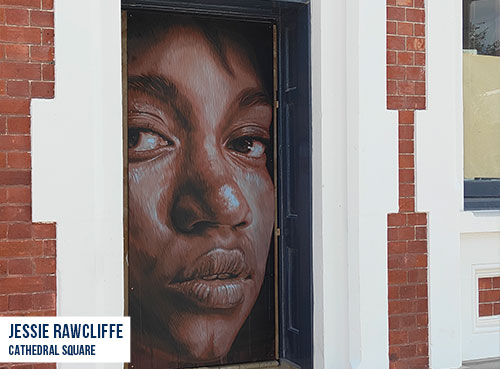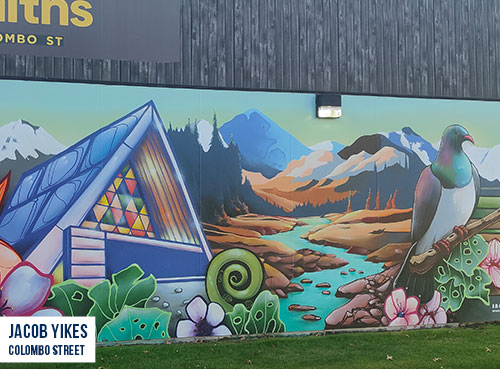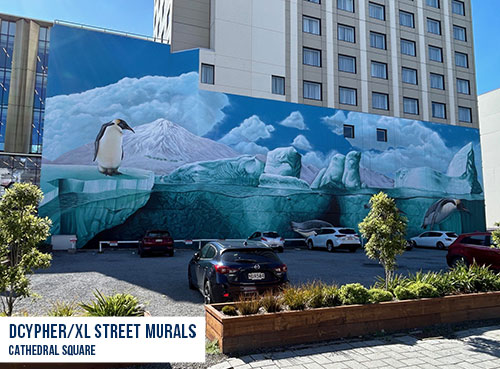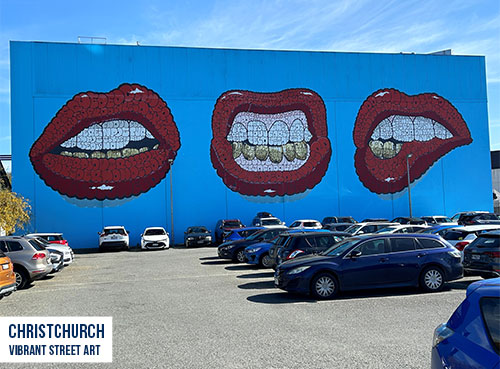

| PREVIOUS | HOME | NEXT |
The art of regeneration
By Resolve Editor Deb Eccleston
Urban art is playing a key role in Christchurch’s recovery from the 2011 earthquake.
The ancient Japanese art of kintsugi, in which gold paint is used to repair broken pottery, celebrates the unique history of artifacts by emphasising the damage rather than hiding it.
The method often makes the repaired piece even more beautiful than the original.
The same could be said for Christchurch, where art is having a similar impact as the city continues to rebuild after the 2011 earthquake. Instead of gold paint, however, buildings are adorned with colourful murals.



Journey of inspiration
Christchurch-based art writer, curator and organiser Dr Reuben Woods spoke about the rise of urban art and its impact at this year’s NZILA annual conference.
Dr Woods is Creative Director of urban arts trust Watch This Space, an organisation dedicated to supporting, sharing and celebrating street art in Christchurch.
While travelling across Europe and the United States in late 2011, Dr Woods discovered murals, paintings and installations which stirred his view that post-quake Christchurch was the right platform for similar expressions.
“While graffiti and street art have been a peripheral part of the city’s landscape for decades, it was the sense of need and the opportunity presented by the post-quake setting that fostered this sort of new emergence, evolution and embrace of these forms,” Dr Woods said.
“From Bristol to London, Paris to Barcelona, Austin to San Francisco, I was led through the streets and alleys where flashes of colour characters, portraits, words and names.
“But my mind would constantly drift to home and our need for transformation, activation and reimagination.”
Returning home in 2012, he began a master’s degree exploring the examples of art on the streets of post-quake Christchurch and within six months transferred to a PhD and spent the next four years studying the transformative potential of large-scale muralism.



Iconic artworks
Dr Woods referred to The Ballerina, a mural painted by Bay of Plenty artist Owen Dippie, on the side of the Isaac Theatre Royal, which he said, “served as a symbol of the city’s rise”.
“She overlooked a hard hit, essentially vacant part of the city – a new landmark that encouraged regeneration,” he said.
Another mural by New Zealand artist Rone, painted on a red brick wall adjacent to the Heritage Christchurch Hotel, has been the face of the city’s recovery for more than a decade. And in the years since the earthquake, more artistic creations have emerged.
“This endurance is recognition of the impact it has had as the city has reshaped and reformed, reflecting the physical realities and the social environments while reimagining the potential of both,” Dr Woods said.
“Rather than being a temporary measure to colour vacant space, street art has become a way to activate urban space to tell stories that celebrate us, to invite exploration, wonder, laughter and intrigue, and ultimately to make us feel connected to place.”
Resolve is the official publication of the Australian Insurance Law Association and
the New Zealand Insurance Law Association.

